Targeting neuroblastoma stem cells with retinoic acid and proteasome inhibitor
- PMID: 24116151
- PMCID: PMC3792090
- DOI: 10.1371/journal.pone.0076761
Targeting neuroblastoma stem cells with retinoic acid and proteasome inhibitor
Abstract
Background: Neuroblastma cell lines contain a side-population of cells which express stemness markers. These stem-like cells may represent the potential underlying mechanism for resistance to conventional therapy and recurrence of neuroblastoma in patients.
Methodology/principal findings: To develop novel strategies for targeting the side-population of neurobastomas, we analyzed the effects of 13-cis-retinoic acid (RA) combined with the proteasome inhibitor MG132. The short-term action of the treatment was compared with effects after a 5-day recovery period during which both chemicals were withdrawn. RA induced growth arrest and differentiation of SH-SY5Y and SK-N-BE(2) neuroblastoma cell lines. Inhibition of the proteasome caused apoptosis in both cell lines, thus, revealing the critical role of this pathway in the regulated degradation of proteins involved in neuroblastoma proliferation and survival. The combination of RA with MG132 induced apoptosis in a dose-dependent manner, in addition to promoting G2/M arrest in treated cultures. Interestingly, expression of stem cell markers such as Nestin, Sox2, and Oct4 were reduced after the recovery period of combined treatment as compared with untreated cells or treated cells with either compound alone. Consistent with this, neurosphere formation was significantly impaired by the combined treatment of RA and MG132.
Conclusions: Given that stem-like cells are associated with resistant to conventional therapy and are thought to be responsible for relapse, our results suggest that dual therapy of RA and proteasome inhibitor might be beneficial for targeting the side-population of cells associated residual disease in high-risk neuroblastoma.
Conflict of interest statement
Figures



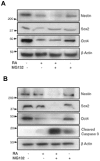

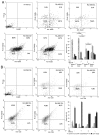

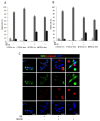
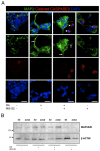
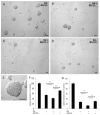
Similar articles
-
Verteporfin induces apoptosis and reduces the stem cell-like properties in Neuroblastoma tumour-initiating cells through inhibition of the YAP/TAZ pathway.Eur J Pharmacol. 2021 Feb 15;893:173829. doi: 10.1016/j.ejphar.2020.173829. Epub 2020 Dec 18. Eur J Pharmacol. 2021. PMID: 33347823
-
Proteasome inhibitors induce apoptosis by superoxide anion generation via NADPH oxidase 5 in human neuroblastoma SH-SY5Y cells.J Pharmacol Sci. 2024 Jun;155(2):52-62. doi: 10.1016/j.jphs.2024.03.002. Epub 2024 Mar 27. J Pharmacol Sci. 2024. PMID: 38677786
-
Enhanced cell cycle perturbation and apoptosis mediate the synergistic effects of ST1926 and ATRA in neuroblastoma preclinical models.Invest New Drugs. 2012 Aug;30(4):1319-30. doi: 10.1007/s10637-011-9689-2. Epub 2011 Jun 3. Invest New Drugs. 2012. PMID: 21633925
-
Zoledronic acid inhibits the growth of cancer stem cell derived from cervical cancer cell by attenuating their stemness phenotype and inducing apoptosis and cell cycle arrest through the Erk1/2 and Akt pathways.J Exp Clin Cancer Res. 2019 Feb 21;38(1):93. doi: 10.1186/s13046-019-1109-z. J Exp Clin Cancer Res. 2019. PMID: 30791957 Free PMC article.
-
Methods used to achieve different levels of the neuronal differentiation process in SH-SY5Y and Neuro2a cell lines: An integrative review.Cell Biol Int. 2023 Dec;47(12):1883-1894. doi: 10.1002/cbin.12093. Epub 2023 Oct 10. Cell Biol Int. 2023. PMID: 37817323 Review.
Cited by
-
Cancer stem cells in neuroblastoma therapy resistance.Cancer Drug Resist. 2019 Dec 19;2(4):948-967. doi: 10.20517/cdr.2019.72. Epub 2019 Nov 11. Cancer Drug Resist. 2019. PMID: 31867574 Free PMC article.
-
Retinoic acid signaling and neuronal differentiation.Cell Mol Life Sci. 2015 Apr;72(8):1559-76. doi: 10.1007/s00018-014-1815-9. Epub 2015 Jan 6. Cell Mol Life Sci. 2015. PMID: 25558812 Free PMC article. Review.
-
A simplified workflow with end-point validation of real-time electrical cell-substrate impedance sensing of retinoic acid stimulated neurogenesis in human SH-SY5Y cells in vitro.BMC Res Notes. 2023 Jun 1;16(1):93. doi: 10.1186/s13104-023-06369-0. BMC Res Notes. 2023. PMID: 37264464 Free PMC article.
-
Vascularized Tissue-Engineered Model for Studying Drug Resistance in Neuroblastoma.Theranostics. 2017 Sep 21;7(17):4099-4117. doi: 10.7150/thno.20730. eCollection 2017. Theranostics. 2017. PMID: 29158813 Free PMC article.
-
Functional interplay between MYCN, NCYM, and OCT4 promotes aggressiveness of human neuroblastomas.Cancer Sci. 2015 Jul;106(7):840-7. doi: 10.1111/cas.12677. Epub 2015 May 19. Cancer Sci. 2015. PMID: 25880909 Free PMC article.
References
-
- Canete A, Gerrard M, Rubie H, Castel V, Di Cataldo A et al. (2009) Poor survival for infants with MYCN-amplified metastatic neuroblastoma despite intensified treatment: the International Society of Paediatric Oncology European Neuroblastoma Experience. J Clin Oncol 27: 1014-1019. doi:10.1200/JCO.2007.14.5839. PubMed: 19171715. - DOI - PubMed
-
- London WB, Castel V, Monclair T, Ambros PF, Pearson AD et al. (2011) Clinical and biologic features predictive of survival after relapse of neuroblastoma: a report from the International Neuroblastoma Risk Group project. J Clin Oncol 29: 3286-3292. doi:10.1200/JCO.2010.34.3392. PubMed: 21768459. - DOI - PMC - PubMed
-
- Matthay KK, Villablanca JG, Seeger RC, Stram DO, Harris RE et al. (1999) Treatment of high-risk neuroblastoma with intensive chemotherapy, radiotherapy, autologous bone marrow transplantation, and 13-cis-retinoic acid. Children’s Cancer Group. N Engl J Med 341: 1165-1173 - PubMed
Publication types
MeSH terms
Substances
LinkOut - more resources
Full Text Sources
Other Literature Sources

